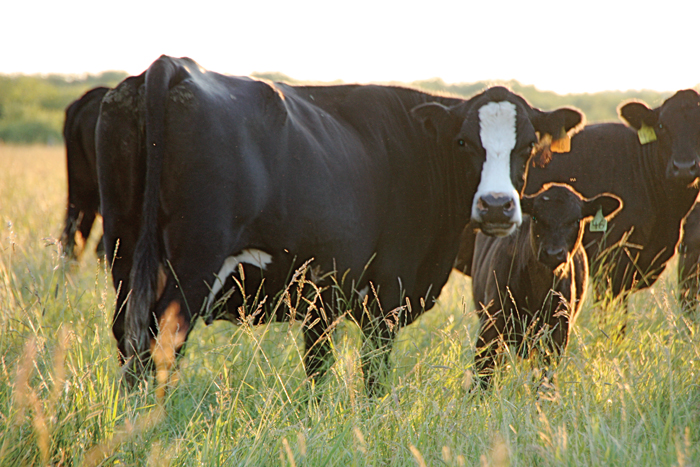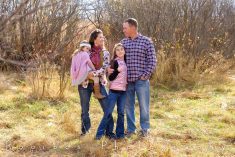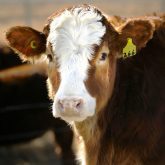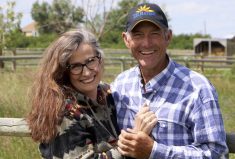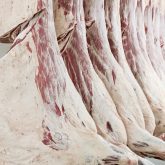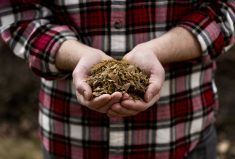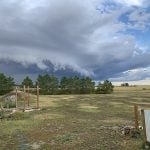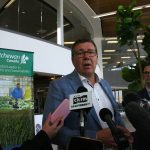Building a beef farm from scratch takes a lot of grit during the best of times. Starting up in hard times calls for that and for confidence in the future.
Richard and Kristy-layne Carr have plenty of both. Not bound by tradition, they went into business with 30 cows on a quarter of land near Marchand, Man., and an open mind about what many established farmers viewed as new ways a decade ago.
“We started the farm in the midst of BSE, so we learned right from the start how to keep inputs low and still keep quality high,” says Richard. “We love the lifestyle and outdoor work, but it’s a long road and there have also been hours and hours spent in front of a calculator doing the math.”
Read Also
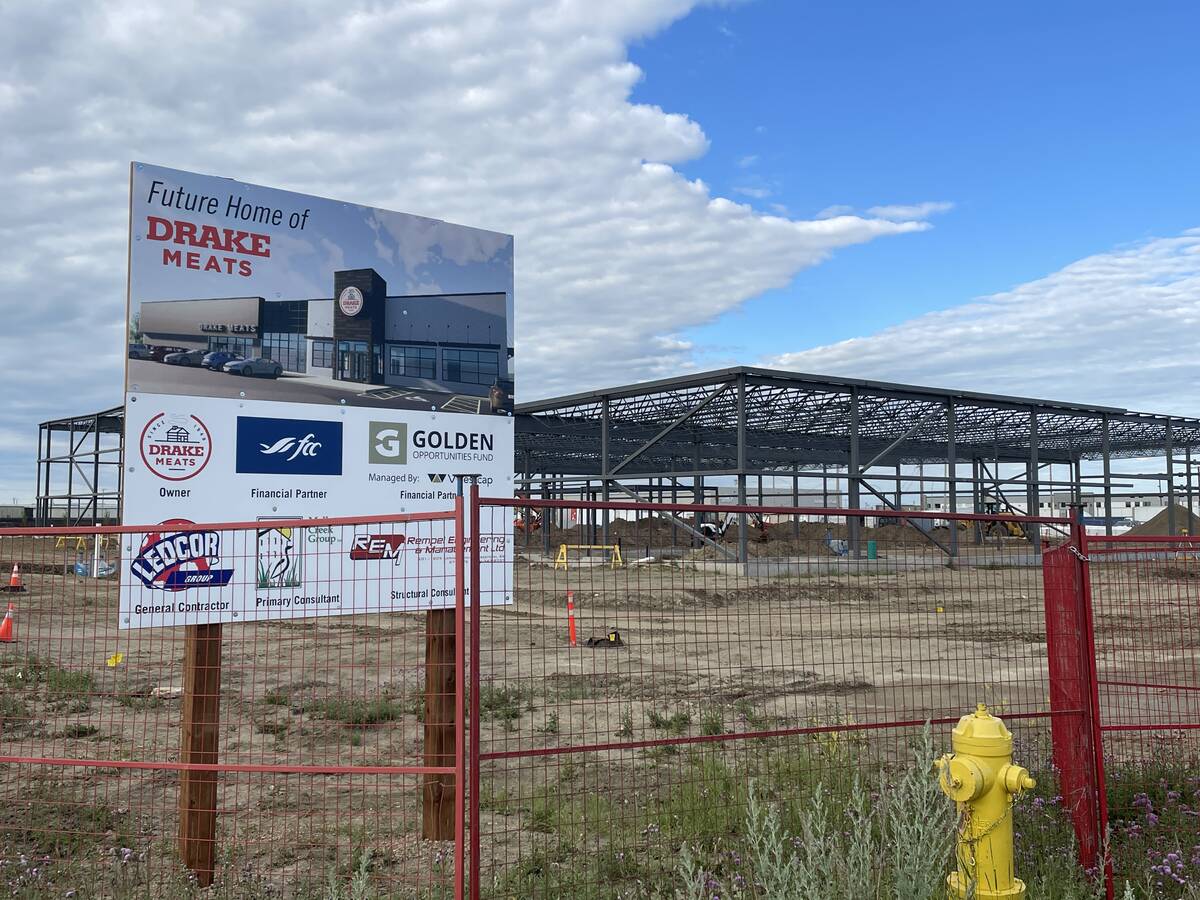
Drake Meats building a federally inspected facility near Saskatoon
The company is expanding its national reach, but keeping its roots in rural Saskatchewan
The two bring complimentary skills to their business, Rich Lane Farms. Kristy-layne grew up on a beef farm, studied animal and range science and managed the Seine-Rat River Conservation District. Richard has strong ties to the dairy industry going back to his early childhood, a longtime involvement in dairy 4-H and employment in the industry. He is currently a sales and nutrition consultant for EMF Nutrition.
Richard always figured his destiny was to become a dairy farmer so their original plan was to raise a few cattle, pigs and chickens to direct market grass-fed meat while starting a small dairy operation.
“I thought I had good stockmanship skills, but I soon learned the beef side is a whole different story when I got chased by a cow at calving. I didn’t look back then and we haven’t looked back since. This is the quality of life we want,” he says.
Getting into beef required far less capital expense than dairy, with a more flexible time commitment, and a structure that gives them room to grow, he says.
They snagged the opportunity to expand four years ago when a farm with a developed yard site including livestock facilities and 1,000 acres came up for sale. They now run 200 cows and feel there’s still room for more.
“We’d feel comfortable with 250 cows on the current land base, but the sky’s the limit because we could rent private pasture, use community pasture, or find custom graziers with management practices similar to ours,” he says. “It’s a good time to expand.”
Most of their calves are sold at weaning through a local auction market, but they keep about 50 back for their grass-fed meat business. It started with a simple Kijiji ad that garnered business from Winnipeg and they still make the hour-plus trip into the city every couple of weeks to deliver orders. Lacoste Garden Center retails their meat as well.
Local demand is really taking off now with their participation in the Pine Ridge Hollow Farmers Market during the summer months and keen interest from two local food-buying co-ops in Steinbach, where their products also sell through Good ’n Natural and Nature’s Pasta.
The meats are processed at provincially inspected plants and cut, wrapped and frozen in clear vacuum packaging by Earl’s Meat Market in Steinbach and Country Style Meats in New Bothwell.
“I love direct marketing because I’m a big promoter of agriculture. I like telling a good story — our story. If you sell your confidence, right there, customers are drawn to you,” he says. “The farmers’ market is a great place to tell people what we do and address misconceptions.”
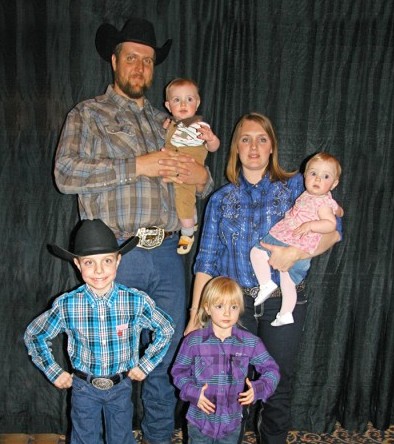
Last year they participated in Manitoba Agriculture’s annual Open Farm Day for the first time and plan to be on the list again this year. Approximately 60 farms signed up to showcase what they do by offering on-farm activities of interest to the general public. Videos and maps from participating farms are posted on the Open Farm Day website well ahead of time. Oftentimes groups organize tour buses to stop at several farms, but lots of families venture out on their own to see for themselves what farming is all about.
More than 100 people from the area and beyond showed up at Rich Lane Farms where they were treated to pasture tours on a horse-drawn wagon and a meal of local food with proceeds donated to a local charity.
“It was the first time some people had seen a real cow, pig or chicken,” Carr says. “The beef industry has the advantage of being more transparent because cattle are raised out in the open, so most people have seen cows in pastures, but lots had never seen one up close.”
Production cycle includes stewardship
“We are big believers that vaccinating and introducing hay to calves at least a month before weaning, so they know what hay and water bowls are about, reduces stress at weaning,” he explains.
They’re flexible on the weaning date going year by year by taking weather and market conditions into consideration. Last winter, they weaned on the early side in December because their cow herd is fairly young. Looking back at the extremely cold winter, it was a wise move.
They’re not so flexible when it comes to their breeding schedule. Calving starts April 20 and runs 60 days.
The core herd is Beefbooster with some Angus and Simmental crosses and a sprinkling of other breeds. They purchase Red and Black Angus bulls developed on high-forage diets.
This spring they brought in their first AI-sired calves. It’s a skill he picked up working in the dairy industry where he saw the advantage of using superior, proven genetics. On the beef side, he sees the added advantage of having a large number of uniform calves from one sire on the ground in short order that will package up nicely at weaning. Using a fixed-time protocol with breeding on the third day, the conception rate was 65 per cent for the 50 cows in the program.
Calving happens on the high side of the home half-section and the pairs are trailered to summer pasture three miles away.
The pastures are fenced in 40-acre squares to accommodate drag line applications of hog manure. It’s a great amendment for their light sandy soil and really boosts production on their native and quack grass pastures.
They’ve adopted rotational grazing over time using temporary cross-fencing, but feel there’s still some tweaking to do to help the pastures reach their full potential.
In talking about being selected as Manitoba Beef Producers’ representative to TESA (the environmental stewardship award, to be presented at the Canadian Cattlemen’s Association’s semi-annual meeting in Prince Edward Island in August), Carr says a stewardship standout for them has been the success of bale grazing.
They get lots of strange looks and questions over it because bale grazing isn’t very common in their area. “It’s not the lazy way, it’s the smarter way,” he comments. “The cows get fed, it improves the land and it reduces yardage costs of hauling bales to the cows, rather then hauling the manure out.”
The results are noticeable the first growing season after bale grazing, especially in dry years, when brown turns to green where the bales had been because the litter traps more moisture.
They buy hay from a neighbour who places it in groups around the wintering site as it’s delivered in October. At first they sectioned off three days’ worth of feed at a time. Now it’s a week. He’s talked to others who have stretched it to a month’s supply and say the cows clean up the hay just as well.
If it’s decent-quality hay, they’ll clean it up better, he says, adding that it took a few years to get his head around the idea that he didn’t have to harrow the residue to let the grass grow through.
They wouldn’t go back to wintering cows any other way, but circumstances forced their hand in 2012, when it was very dry and the limited hay supply had to be reserved for animals in their grass-fed program.
The rest of the herd received pellets and straw fed with a shredder every day. Not only was it a very expensive way to feed, he says, but there’s something about hay bales that the substitute ration couldn’t match, even though it balanced out on paper.
Summer plans call for installing a year-round solar-powered water bowl out in the pasture. This will let them move the bale grazing site around to target more areas with poor soil.
They’re also looking forward to starting a water retention project in co-operation with the Seine-Rat River Conservation District. The idea is to filter run-off nutrients from their pasture before the water reaches the spring creek that eventually drains into the Seine River.
The Carrs see lots of opportunity in beef and room for small farms of all kinds because they have the resilience to flex with time and circumstances.
Two important take-away messages from the recent holistic management course led by Bev and Don Campbell were to plan for profit from the start and to write goals into your farm plan. If quality of life is a goal, family time has to be part of the farm plan and even more so now with Slade, five, Elora, three, and twins Nate and Isabel, a year old this summer. They want their family to grow up seeing the good side of agriculture with memories of farm life as positive as those they had as children that ultimately led to where they are today.


